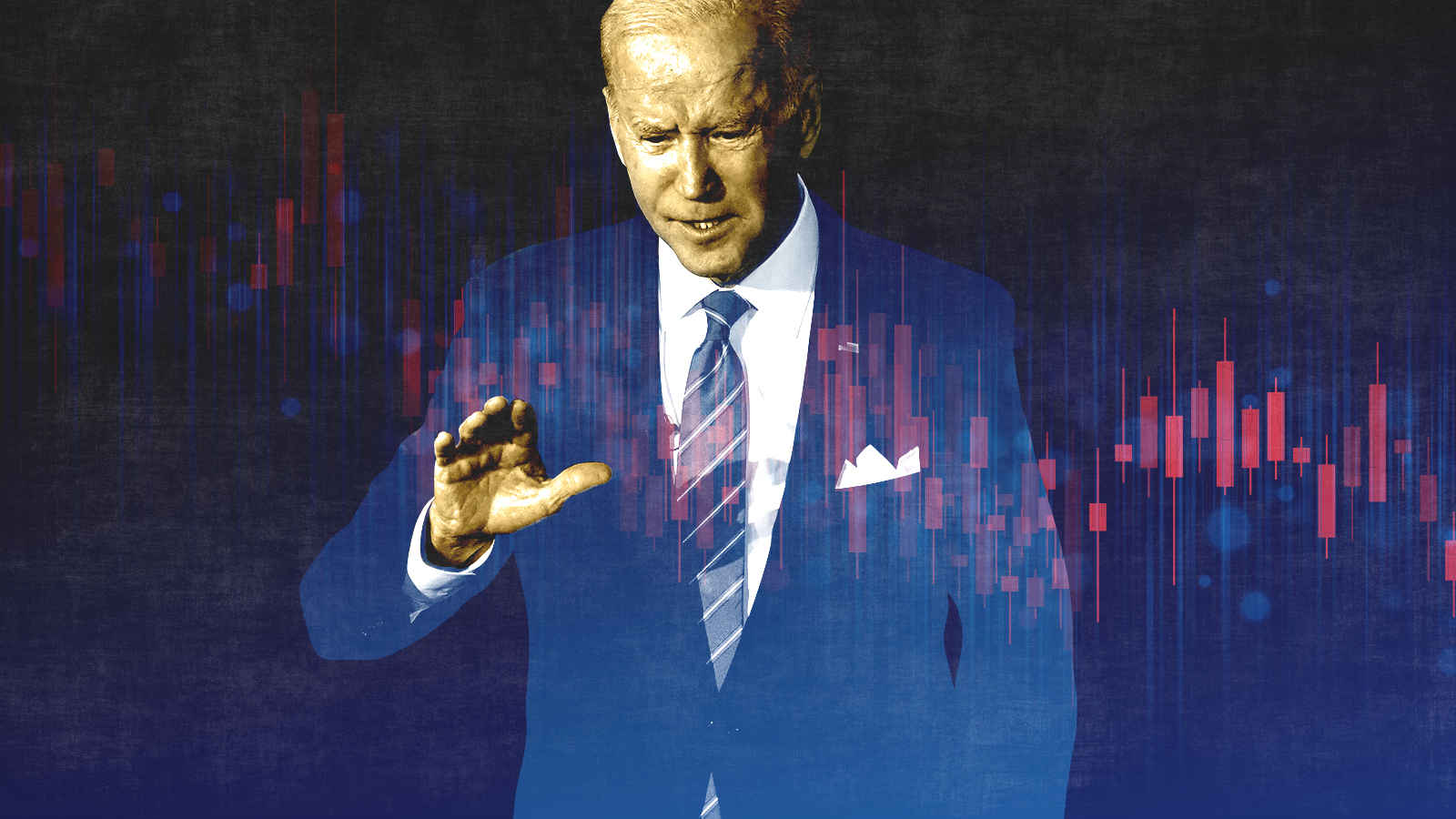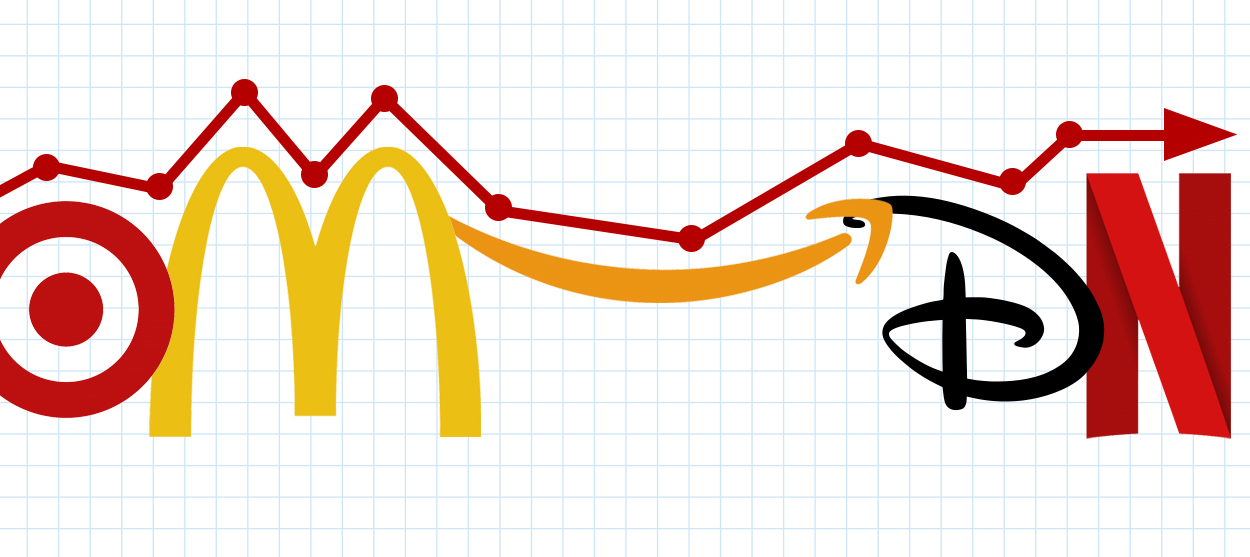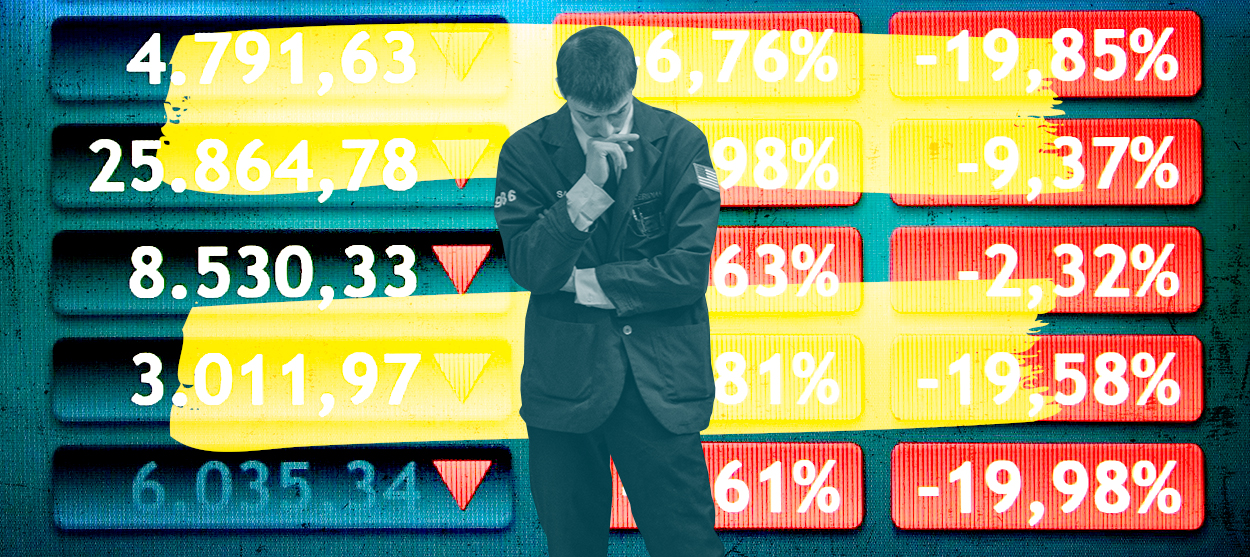Why are Americans suddenly so passive when managing money?
On the quiet revolution in personal finance in America


Very quietly, the way that many Americans invest their money is changing. And it's changing in a way that could upend the way Wall Street does business.
When you think of investment, you probably think of a person looking to save, build a retirement fund, or just make a buck on excess cash. They probably hand their money over to a financial firm, which picks and chooses stocks and other financial instruments, looking to get as a good a return as possible. That's the traditional model, called "active" management.
But there's another model, called "passive" management, where the money is invested according to some pre-designed index.
The Week
Escape your echo chamber. Get the facts behind the news, plus analysis from multiple perspectives.

Sign up for The Week's Free Newsletters
From our morning news briefing to a weekly Good News Newsletter, get the best of The Week delivered directly to your inbox.
From our morning news briefing to a weekly Good News Newsletter, get the best of The Week delivered directly to your inbox.
Take the S&P 500 index. It's capitalization-weighted, meaning the influence of each stock in the index is proportional to the total value of the company's outstanding shares. A passively managed fund that uses the S&P 500 would just invest its money in the same proportions as those weights, and change its investments as those weights change.
John Bogle, the founder of Vanguard, pioneered passive management in 1976 using Vanguard's VFINX. It was such an affront to Wall Street's self-conception — which centers on the idea of individual managers as unique financial wizards — that it was derisively nicknamed "Bogle's Folly."
Forty years later, Bogle's Folly governs one-third of all the U.S. money managed by investment firms, or roughly $15 trillion out of $50 trillion as of 2014.
The pace at which passive management is displacing active management is speeding up. As recently as 2009, it only accounted for 20 percent of all managed U.S. investments, which would only be $10 trillion out of today's $50 trillion. Since 2010, investments in passive management have shot up dramatically, with a whopping $413 billion flowing into passive management in 2015. Meanwhile, active management lost investors to the tune of $207 billion in 2015, and has lost another $76 billion so far in 2016.
A free daily email with the biggest news stories of the day – and the best features from TheWeek.com
Why is passive management increasingly popular? Because research has largely confirmed Bogle's argument that the average investor is better off just riding the market. Most active managers don't make more money for their clients compared to index funds once fees are accounted for. And a January report from S&P pointed out that even the managers who do beat the market can't sustain the success for long.
Passive management is super cheap: The fees investors pay for it are way lower than with active management. That makes passive management more attractive to everyday investors. As more money pours in, economies of scale make it more efficient and cheaper still. That puts pressure on active managers to get their costs down.
Those fees matter. Because of the economic rut we've been stuck in at least since the Great Recession, interest rates and returns on investments have been driven quite low. The sting of high management fees is much worse now than in the investment environment we had 20 or 30 years ago.
And there's also something appealing in the automation offered by passive management.
America's first stock index, the Dow Jones, was established way back in 1896. At first, its employees collected and tracked information on stocks by hand. Then telecommunication and information technology began to improve, allowing more information to be tracked and updated faster. The S&P 500 was born in 1957, and Bogle used the "tech" of stock indexing to create the first index fund 19 years later.
Since then the increasing speed and power of computers and telecommunications have allowed index funds to keep doing the same job evermore cheaply, which has allowed them to become evermore customizable. Vanguard now has indexes for the entire market, just for real-estate, for firms with small capitalization only, and more. Firms like WisdomTree are developing index funds based on different growth or retirement goals, for instance.
The practice can go much further. A lot of active management is just figuring out principles or rules of thumb for what qualities to look for in companies. As information technology becomes more sophisticated, more of those rules can be built into indexes and automated. "You can build an index that focuses on people issues or natural resource use, like energy efficiency or water use efficiency, or even transparency or board composition," R. Paul Herman, the founder and CEO of HIP Investor, told The Week.
Going forward, more and more of what used to be attributed to the mysterious skill of investment managers will likely be digested by index technology, blurring the lines between active and passive management, and proving once and for all that Bogle's Folly was anything but.
Jeff Spross was the economics and business correspondent at TheWeek.com. He was previously a reporter at ThinkProgress.
-
 5 editorial cartoons about ICE killing Renee Nicole Good
5 editorial cartoons about ICE killing Renee Nicole GoodCartoons Artists take on ICE training, the Good, bad, ugly, and more
-
 Political cartoons for January 10
Political cartoons for January 10Cartoons Saturday’s political cartoons include a warning shot, a shakedown, and more
-
 Courgette and leek ijeh (Arabic frittata) recipe
Courgette and leek ijeh (Arabic frittata) recipeThe Week Recommends Soft leeks, tender courgette, and fragrant spices make a crisp frittata
-
 The pros and cons of noncompete agreements
The pros and cons of noncompete agreementsThe Explainer The FTC wants to ban companies from binding their employees with noncompete agreements. Who would this benefit, and who would it hurt?
-
 What experts are saying about the economy's surprise contraction
What experts are saying about the economy's surprise contractionThe Explainer The sharpest opinions on the debate from around the web
-
 The death of cities was greatly exaggerated
The death of cities was greatly exaggeratedThe Explainer Why the pandemic predictions about urban flight were wrong
-
 The housing crisis is here
The housing crisis is hereThe Explainer As the pandemic takes its toll, renters face eviction even as buyers are bidding higher
-
 How to be an ally to marginalized coworkers
How to be an ally to marginalized coworkersThe Explainer Show up for your colleagues by showing that you see them and their struggles
-
 What the stock market knows
What the stock market knowsThe Explainer Publicly traded companies are going to wallop small businesses
-
 Can the government save small businesses?
Can the government save small businesses?The Explainer Many are fighting for a fair share of the coronavirus rescue package
-
 How the oil crash could turn into a much bigger economic shock
How the oil crash could turn into a much bigger economic shockThe Explainer This could be a huge problem for the entire economy
